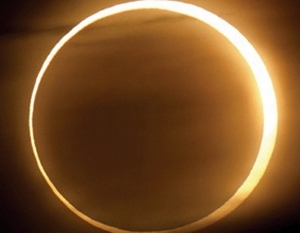Just a quick one, today. And not even my own words.
Isaac Asimov, author of more than 500 books, and countless
essays on science, had this to say about the Moon and its perfect fit over the Sun
during a solar eclipse:
"What makes a total solar eclipse so remarkable is the
sheer astronomical accident that the Moon fits so snugly over the Sun. The Moon
is just large enough to cover the Sun completely (at times) so that a temporary
night falls and the stars spring out. And it is just small enough so that
during the Sun's obscuration, the corona, especially the brighter parts near
the body of the Sun, is completely visible.
“The apparent size of the Sun and Moon depends upon both
their actual size and their distance from us. The diameter of the Moon is 2160
miles while that of the Sun is 864,000 miles. The ratio of the diameter of the
Sun to that of the Moon is 864,000/2160 or 400. In other words, if both were at
the same distance from us, the Sun would appear to be 400 times as broad as the
Moon.
“However, the Sun is farther away from us than the Moon is,
and therefore appears smaller for its size than the Moon does. At great
distances, such as those which characterize the Moon and the Sun, doubling the
distance halves the apparent diameter. Remembering that, consider that the
average distance of the Moon from us is 238,000 miles while that of the Sun is
93,000,000 miles. The ratio of the distance of the Sun to that of the Moon is
93,000,000/238,000 or 390. The Sun's apparent diameter is cut down in
proportion.
“In other words, the two effects just about cancel. The
Sun's greater distance makes up for its greater size and the result is that the
Moon and the Sun appear to be equal in size. The apparent angular diameter of
the Sun averages 32 minutes of arc, while that of the Moon averages 31 minutes
of arc.
“These are average values because both Moon and Earth
possess elliptical orbits. The Moon is closer to the Earth (and therefore
appears larger) at some times than at others, while the Earth is closer to the
Sun (which therefore appears larger) at some times than at others. This
variation in apparent diameter is only 3 per cent for the Sun and about 5 per
cent for the Moon, so that it goes unnoticed by the casual observer.
“There is no astronomical reason why Moon and Sun should fit
so well. It is the sheerest of coincidence, and only the Earth among all the
planets is blessed in this fashion. Indeed, if it is true, as astronomers
suspect, that the Moon's distance from the Earth is gradually increasing as a
result of tidal friction, then this excellent fit even here on Earth is only
true of our own geologic era. The Moon was too large for an ideal total eclipse
in the far past and will be too small for any total eclipse at all in the far
future."
What’s significant about this is that it is by the
observation of—and the explanation of—solar eclipses and similar phenomena that
we came to create the science of astronomy, which led to the science of
physics, science in general, engineering, and our modern civilization. Without
that coincidence of the size of the moon and the sun, none of that would have
happened as it did.

No comments:
Post a Comment